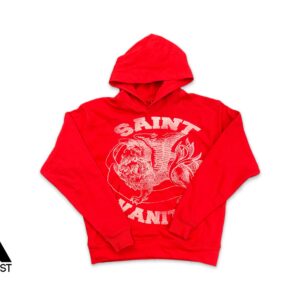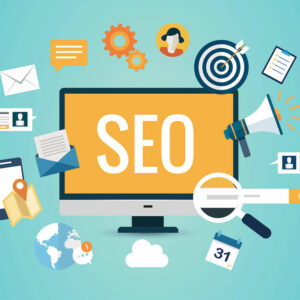Introduction
Dreaming of launching your own activewear label? Good news—there’s never been a better time. With fitness and fashion booming, starting your own brand is not only doable, it’s a smart move. Whether you’re passionate about health or looking to jump into a profitable niche, this blueprint is designed to walk you through every step—from idea to launch. So, let’s dive into your journey of becoming the next big thing in activewear.
Why Activewear? The Booming Market Explained
Activewear isn’t just a trend—it’s a lifestyle. With people increasingly blending comfort and fashion, the demand for stylish and functional gym wear is skyrocketing. According to recent reports, the global activewear market is expected to reach over $500 billion by 2027. Why? Because consumers want gear that works both in the gym and on the go.
Step 1 – Define Your Niche and Brand Identity
Understand Your Audience
You can’t sell to everyone. So, start by figuring out who your ideal customer is. Are you targeting yoga moms, hardcore gym bros, outdoor runners, or eco-conscious shoppers? Once you know your audience, build everything around them—designs, colors, messaging, and even pricing.
Pick a Brand Name and Logo
Your brand name should be memorable, easy to pronounce, and align with your values. The logo? Keep it simple, clean, and versatile. Make sure it looks good on a hoodie, website, or Instagram profile.
Step 2 – Create a Business Plan
Outline Costs & Budget
You don’t need millions to start, but you do need a plan. Account for production, branding, marketing, eCommerce setup, shipping, and emergency costs. Don’t forget about tech tools, packaging, and maybe hiring a freelancer or two.
Define Marketing and Sales Channels
Will you sell through your own website, Amazon, Etsy, or local gyms? Outline how you’ll drive traffic: social media ads, SEO, influencer marketing, etc.
Step 3 – Research and Choose the Right Clothing Vendor
Importance of Picking a Reliable Manufacturer
One of the most important decisions you’ll make is to choose the right clothing vendor. This single choice can either set your brand up for long-term success—or sink it before it even launches. A quality vendor ensures your materials are consistent, delivery is on time, and the product lives up to your brand promise. You want someone who’s as committed to quality and timelines as you are.
Local vs Overseas Vendors: Pros and Cons
- Local: Quicker communication, easy quality checks, but may be expensive.
- Overseas: Affordable and more options but requires strict quality control and longer shipping.
Always take your time to choose the right clothing vendor through proper research, sample testing, and background checks. It’s not just about price—it’s about reliability and partnership.
Step 4 – Design and Develop Your Collection
Functional Fabrics That Matter
When picking fabrics, don’t just go by feel. Look for materials that directly support health and comfort:
- Spandex/Elastane – Enhances flexibility and muscle support.
- Nylon – Lightweight and quick-drying, great for intense workouts.
- Polyester Blends – Durable, sweat-resistant, and breathable.
- Organic Cotton – Perfect for low-impact workouts and eco-conscious customers.
These materials contribute directly to the benefits of using appropriate sports clothing for health—they’re more than just a selling point; they’re a necessity for performance.
Start with Essentials
You don’t need a 50-item collection. Start with must-haves like leggings, sports bras, shorts, and performance tees. Make sure every piece reflects your brand values.
Step 5 – Understanding Health Benefits
Benefits of Using Appropriate Sports Clothing for Health
Sure, looking stylish is cool, but the benefits of using appropriate sports clothing for health go far beyond appearances. Quality activewear supports muscle performance, improves circulation, and can even prevent injuries. For instance, compression leggings help boost blood flow, while moisture-wicking shirts keep your body dry and regulate temperature.
Investing in the right materials and designs isn’t just good business—it’s a health-conscious move that today’s buyers genuinely care about. So when you’re designing your products, always factor in the benefits of using appropriate sports clothing for health. It builds trust and adds a functional edge to your fashion.
Step 6 – Build Your Brand’s Online Presence
Launch Your Website
Use platforms like Shopify or WooCommerce to launch a sleek, mobile-friendly store. Make navigation easy and showcase high-quality product photos.
Use Social Media Smartly
Pick 2-3 platforms and go all in. Instagram and TikTok work great for visuals. Don’t just post—engage. Polls, behind-the-scenes reels, and workouts with your gear make great content.
Step 7 – Market Like a Pro
Influencer Marketing
Partner with micro-influencers who genuinely align with your brand. Gift them your gear and encourage honest reviews.
Email Campaigns
Build an email list from Day 1. Send out new drops, exclusive deals, and even fitness tips. Email still converts.
Step 8 – Launch and Scale
Soft Launch Strategy
Start small with a limited collection and pre-orders. Collect feedback, tweak what’s needed, and use testimonials for your full launch.
Monitor, Improve, and Expand
Track what sells and what doesn’t. Use tools like Google Analytics and Hotjar to improve UX. Once profitable, add more designs or even move into new fitness niches like swimwear or yoga accessories.
Common Mistakes to Avoid
- Copying big brands without a unique twist
- Ignoring customer feedback
- Poor-quality control
- Overproduction and dead stock
- Underestimating marketing budgets
Conclusion
Starting your activewear label might feel overwhelming, but take it step-by-step and you’ll make progress. Define your niche, choose the right clothing vendor, prioritize quality, and always think about the benefits of using appropriate sports clothing for health. Remember, people want more than just trendy gear—they want to feel better, perform better, and live healthier lives. Your brand can be the one that delivers just that.
FAQs
1. How much money do I need to start an activewear brand?
You can start lean with $2,000–$5,000, but $10k gives more flexibility.
2. What are the best fabrics for activewear?
Spandex, nylon, polyester blends, and bamboo are great choices.
3. How do I find a clothing manufacturer?
Use platforms like Alibaba, Faire, or industry trade shows. Vet carefully.
4. Should I sell on my own website or use marketplaces?
Both have benefits. Start with your own site, then branch out.
5. Is activewear still a profitable niche in 2025?
Absolutely. Demand is rising globally, especially in health-focused and eco-conscious segments.





